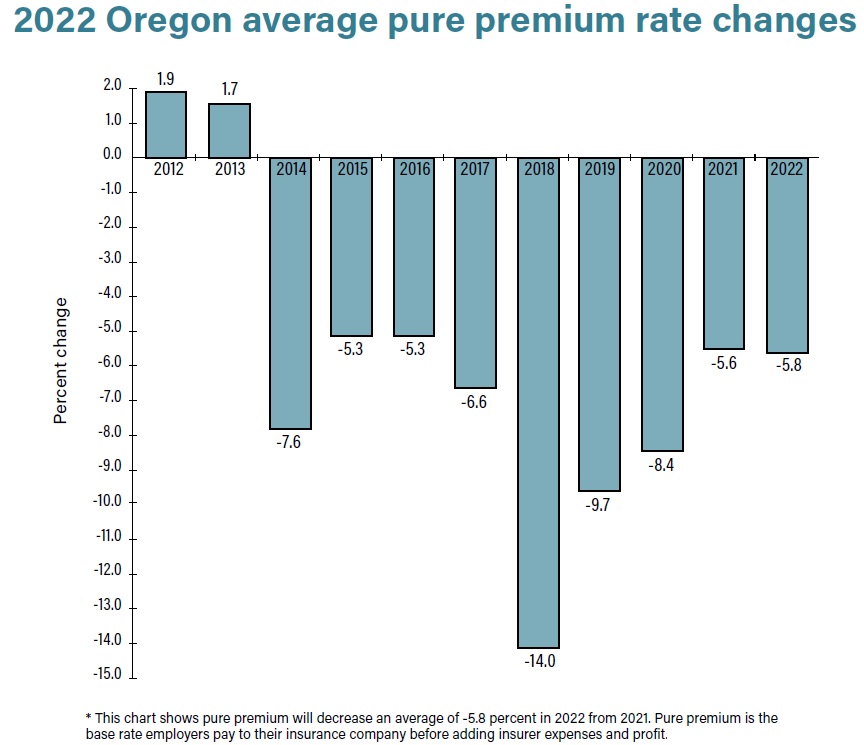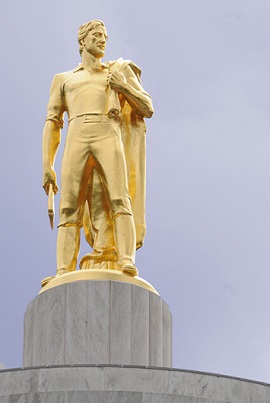Due to a continued downward trend in Oregon’s lost-time claim frequency
In 2022, Oregon employers, on average, will pay less for workers’ compensation coverage according to the Oregon Department of Consumer and Business Services. The decline in costs marks nine years of average decreases in the pure premium rate -- the base rate insurers use to determine how much employers must pay for medical costs and lost wages.
Underpinning the cost decreases is the success of Oregon’s workers’ compensation system, which includes programs to control costs, maintain good worker benefits, ensure employers carry insurance for their workers, and to improve workplace safety and health.
The numbers illustrate positive, long-term trends:
- Employers, on average, will pay 97 cents per $100 of payroll for workers’ compensation costs in 2022, down from $1.02 in 2021, under a proposal by DCBS. That figure covers workers’ compensation claims costs, assessments, and insurer profit and expenses.
- The pure premium rate will drop by an average 5.8 percent under the proposal. In fact, the pure premium – filed by a national rate-setting organization and reviewed by DCBS – will have declined by 51 percent during the 2013 to 2022 period.
The reduction in costs is due to a continued downward trend in Oregon’s lost-time claim frequency and downward trends in claim severity and medical costs, according to the National Council on Compensation Insurance. NCCI is the U.S. rate-setting organization whose recommendation DCBS reviews as part of its annual public process to decide rates.
Employers’ total cost for workers’ compensation insurance includes the pure premium and insurer profit and expenses, plus the premium assessment. Employers also pay half of the Workers’ Benefit Fund assessment, which is a cents-per-hour-worked rate.
The decrease in the pure premium of 5.8 percent is an average, so an individual employer may see a larger or smaller decrease, no change, or even an increase, depending on the employer’s own industry, claims experience, and payroll. Also, pure premium does not take into account the varying expenses and profit of insurers.
 --Staff Reports
--Staff Reports| Post Date: 2021-09-14 13:00:09 | Last Update: 2021-09-14 09:04:34 |







